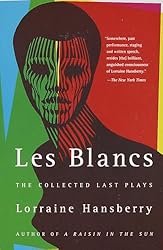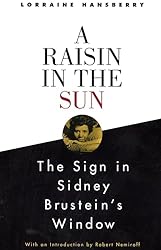Book Review: Lorraine Hansberry; The Life Behind A Raisin In the Sun by Charles J. Shields
The moving story of the life of the woman behind "A Raisin in the Sun", the most widely anthologized, read, and performed play of the American stage, by the New York Times bestselling author of Mockingbird: A Portrait of Harper Lee Written.
Lorraine came from a family poised of exceptionally educated and upper middle class respectable people who believed in self-help. She was the youngest of four (4) children. I was very surprised at the dealings of Lorraine’s father, Carl Hansberry, being a landlord in the black belt crippled its community, by raising rent and chopping up the rooms, and doing away with the upkeep. However, his efforts to make additional housing was commendable, but this led to a court trial of possession of property by misuse of the law. The court case of Hansberry v. Lee was settled in a Supreme Court ruling. This time period in which the civil rights movement began to change social norms, also created an exodus of whites to cities outside of urban areas and into newly created suburbs.
The family history on her mother’s side, the Perry’s was very interesting and engaging. Her grandfather whom escaped slavery by hiding in the Kentucky hills and finding his way to New York at the age of thirteen, as well as her great grandfather’s history, performing slave work in the fields of a Virginia plantation, and emancipated in his forties with nothing, and later fought the courts for voters suppression.
How the name Hansbrough changed to Hansberry due to misinterpretation was common in slaves due to lack of acknowledgement as humans and in result, legacies were broken, and missing pieces. Families divided and unable to reconnect.
“Genealogical trees do not flourish among slaves.” - Frederick Douglass
produced on Broadway, as well as the first play with a black director on
broadway, named Lloyd Richardson. Hansberry wrote a story about a
struggling African American working class family, trying to achieve the
American dream in the 1950s within segregated neighborhoods on the
south side of Chicago. The stories role is to teach readers how to view
conditions, deal with various circumstances, decision making and most
importantly learn about human values in the present time of volatile,
uncertain complex and ambiguous world. The play is not about the
Hansberry family, but it focuses on incidents surrounding the family.
Despite initial controversy around the production of the play, it was a great
success of a richly authentic American life portrayed in a theater
performance, and was nominated for four Tony Awards.
Hansberry inspired. the Nina Simone song, "To Be Young, Gifted and Black," whose title line came from Hansberry's autobiographical play.
Historical Facts:
- Worst race riot in Bronzeville, constituting one of the first, and probably the largest, instances of armed self-defense by Negroes to date in American history.
- Jesse Binga, one of the wealthiest real estate speculators on the South Side of Chicago.
- Diamond Jim Brady, was an American businessman, financier and philanthropist of the Gilded Age. Brady parlayed his knowledge of the rail transport industry and its officials to become a highly successful salesman for a railroad supply company.
- James J. Burke, the owner of several apartment buildings, President of the Woodlawn Property Owners Association.
- Walter White, executive secretary of the NAACP.
- Irvin C. Mollison, president of the Illinois State Conference of the NAACP.
- Negro Motorist Green Book.
- Lake Idlewild, “Black Eden”deep inside the Manistee National Forest in Lake Michigan
- Madam C. J. Walker (entrepreneur), W. E. B. Du Bois, Charles Waddell Chestnut (novelist)
- Purple Palace Supper Club, The Flamingo, Paradise Club
- Julian Black, manager for heavyweight boxer Joe Louis.
- Alain Locke, the prime mover of the Harlem Renaissance.
Review
I won this ARC from the publisher via LibraryThing for my honest review.
This time period in which the civil rights movement began to change social norms, also created an exodus of whites to the suburbs. This is a a slow read with a plethora of footnotes, that represents a deluge of research. At times I had trouble understanding what the author was quoting or saying in the literature or letters of correspondence between Hansberry and acquaintances. As stated by the author; She was a partner in Hansberry Enterprises and a part owner of slums, which would eventually cause her unhappiness and embarrassment. Lorraine came from a family poised of exceptionally educated and upper middle class respectable people who believed in self-help. I was very surprised at the dealings of Lorraine’s father, Carl Hansberry, being a landlord in the black belt crippled its community, by raising rent and chopping up the rooms, and doing away with the upkeep. However, his efforts to make additional housing was commendable, but this led to a court trial of possession of property by misuse of the law. The court case of Hansberry v. Lee was settled in a Supreme Court ruling.
I became bored at times with the communist activities and was emotional about the racism and segregation. The facts and research that Shields put into writing this book is outstanding, but very thesis in nature and less frankly written. Overall, it has a very sound textbook like feel.
It was interesting to read about Lorraine’s self-exile from Chicago to escape the reign and fines under Mayor Daley’s administration, charging the Hansberry’s as slum lords.
As Shields wrote, Her aim was to depict the humanity of the people under an economic system she wanted to overturn, capitalism, to replace it with socialism. Hansberry wrapped her ideology inside an engaging story. Charles Shields presents Lorraine Hansberry as a celebrity and a compassionate thinker in her own right. He gives the reader the inside view of her relationship with her husband, Bob Nemiroff, activism, and artist. Her friendships with the renaissance era of writers and thinkers, such as James Baldwin, and Alain Locke.
The description of how the play was reviewed by critics while at the restaurant Sardis, was descriptive and eventful. As a reader, I felt like I was amongst the crowd anticipating a reading. Today, the National Theater lists A Raisin in the Sun as one of the one hundred most significant works of the twentieth century.
“…I believe that white people are dreadfully ignorant of Negro life in America.”
- Lorraine Hansberry.
This is a profound statement that rings true in this day and time, 2022. Overall I found this book a great read and I highly recommend it. At the time of this reading, I have not seen the play in its entirety, nor had I read the book. I've since purchased two books to read in her honor. Les Blancs: The Collected Last Plays, A Raisin In The Sun/The Sign in Sidney Brustein's Window.









Comments